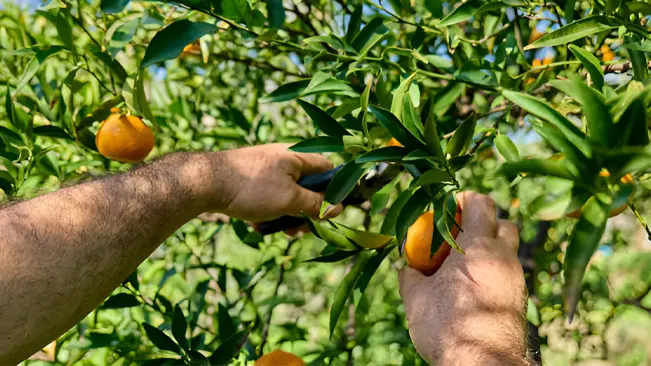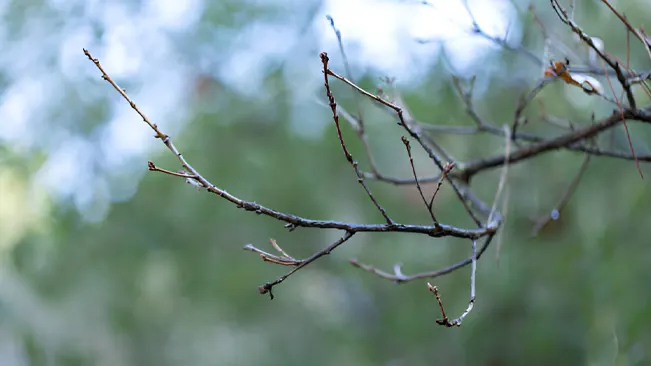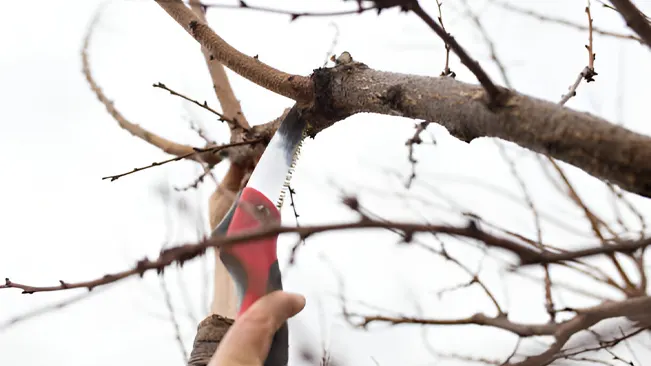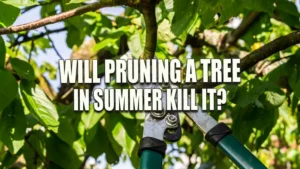How to Prune Fruit Trees
- September 26, 2024
- 0 comment
Pruning fruit trees can seem like a daunting task. How do you know when or where to cut? Is it really necessary? For many gardeners, these questions arise regularly, but proper pruning is crucial for maintaining the health and productivity of your fruit trees. So, why is pruning important, and how do you go about it?

In short, pruning improves air circulation, light penetration, and controls the shape of the tree, all of which lead to healthier trees and more abundant fruit. Let’s dive into the essential steps, key considerations, and best practices for pruning your fruit trees.
Why Pruning Matters
Pruning is the selective removal of specific branches to shape and promote a tree’s health. If left unpruned, fruit trees can become overgrown, with branches that tangle or grow inward, blocking sunlight from reaching inner limbs. This lack of light results in poor fruit production and disease susceptibility. Pruning helps the tree by:
- Improving air circulation to reduce the risk of fungal infections.
- Maximizing sunlight exposure to encourage fruiting.
- Removing dead or diseased wood, which prevents decay from spreading.
- Shaping the tree for easier harvests and more consistent fruiting.
Consider this When Pruning
Several factors influence how and when you should prune your fruit trees. Understanding these can help you make the best choices for your specific trees.
Tree Age
- Young Trees (1-3 years): Pruning helps shape the structure, encouraging the development of strong, balanced branches. Early pruning sets the stage for future growth.
- Mature Trees (4+ years): The focus shifts toward maintaining a healthy balance between vegetative growth and fruit production.
Pruning Season
The timing of pruning is critical for the tree’s health:

- Dormant Season (Late Winter to Early Spring): This is the ideal time for most fruit trees. During dormancy, the tree is less likely to experience stress, and cuts heal more efficiently.
- Summer Pruning: Light pruning can be done in the summer, especially to remove water sprouts (vigorous vertical shoots) and to manage the tree’s shape. However, heavy summer pruning can reduce the tree’s energy and delay fruit ripening.
Tree Variety
Different fruit tree species require distinct pruning approaches:
- Apple and Pear Trees: These trees typically benefit from spur pruning, where you encourage short, fruit-bearing branches called spurs.
- Stone Fruits (Peaches, Cherries, Plums): These trees bear fruit on new growth and benefit from more aggressive pruning to promote new shoots.
Tree Health
Always inspect your tree before pruning. Look for:

- Dead or Diseased Branches: These should be removed immediately, regardless of the season.
- Crossing or Rubbing Branches: Branches that cross over each other can damage the bark and introduce disease.
Different Pruning Techniques for Fruit Trees
Various techniques are used when pruning fruit trees, each serving a different purpose:
1. Thinning Cuts
Thinning involves removing an entire branch back to its point of origin. This technique is used to:

- Improve light and air penetration.
- Remove crowded or weak branches.
- Reduce the overall size of the tree.
For example, on an apple tree, thinning out dense branches helps ensure that sunlight can reach the spurs that will bear next year’s fruit.
2. Heading Cuts
Heading cuts shorten a branch, encouraging it to grow side shoots. This technique is useful for:
- Encouraging more fruiting wood in younger trees.
- Shaping the tree to control its size and form.
- Creating a strong structure in the tree’s early years.
Peach trees, for instance, respond well to heading cuts because they fruit on new growth, so stimulating the tree to produce new branches is crucial.
3. Renewal Pruning
As trees age, older branches may lose productivity. Renewal pruning involves removing old, unproductive wood to encourage new growth. This technique is particularly important for stone fruits, which fruit best on younger wood.
Practical Tips for Pruning Fruit Trees
- Use sharp, clean tools: Dull or dirty tools can damage the tree and spread disease.
- Angle your cuts: Make cuts at a 45-degree angle to prevent water from settling on the wound, which could lead to rot.
- Don’t over-prune: Removing more than 20-30% of a tree’s canopy in one season can stress the tree, reducing its ability to produce fruit.
- Step back and assess: Pruning requires balance. Periodically step back and look at the tree’s shape to ensure you’re maintaining its structure without cutting too much.
Common Mistakes to Avoid
- Topping the tree: Never cut off the top of a fruit tree to reduce its height. This practice encourages weak, vigorous growth that won’t produce fruit.
- Pruning too late in the season: Pruning in late spring or early summer can remove the buds for the current year’s fruit.
- Neglecting young trees: Early pruning shapes a tree’s growth and prevents problems later. Skipping pruning in the tree’s formative years often leads to poor structure and reduced fruit production down the line.
Conclusion
Pruning fruit trees may seem like a complicated process at first, but with the right knowledge and techniques, it becomes a straightforward and rewarding task. By focusing on the tree’s age, pruning at the right time, and using appropriate methods for each species, you can ensure that your trees stay healthy and productive for years to come.
Frequently Asked Questions (FAQ)
- When is the best time to prune fruit trees?
The best time to prune most fruit trees is during the late winter or early spring, when the tree is still dormant. This encourages healthy growth in the upcoming growing season. - How much of the tree should I prune?
You should avoid pruning more than 20-30% of the tree’s canopy in one season. Excessive pruning can stress the tree and reduce fruit production. - Why is pruning necessary for fruit trees?
Pruning helps improve air circulation, light penetration, and removes dead or diseased branches. It also helps shape the tree for better fruit production and easier harvest. - Can I prune my tree during the summer?
Light pruning can be done in summer to remove water sprouts and manage the tree’s shape. However, major pruning should be reserved for the dormant season to avoid stressing the tree. - What’s the difference between heading and thinning cuts?
A heading cut shortens a branch to encourage side shoots, useful for shaping young trees. A thinning cut removes an entire branch to improve air and light flow and reduce overcrowding. - What tools do I need for pruning?
You’ll need clean, sharp pruning shears for smaller branches, loppers for medium-sized branches, and a pruning saw for larger limbs. Disinfect your tools between cuts to prevent spreading disease. - What happens if I don’t prune my fruit trees?
Without pruning, trees can become overgrown, leading to poor air circulation and less light penetration, which can result in disease and reduced fruit production.

Charles Hayes
Forestry AuthorI'm Charles Hayes, I bring over 15 years of specialized expertise in landscaping and woodworking, blending artistic design with sustainable environmental stewardship. My career, fueled by a profound passion for the natural world, encompasses extensive education and hands-on experience in creating harmonious, eco-friendly outdoor spaces and responsibly managing forest resources. Recognized for my professional standing, I am committed to continuous learning and certification in cutting-edge practices. My expertise is not only reflected in my work but also in my contributions to community projects, educational workshops, and collaborations with industry leaders. As an authoritative voice in my field, I strive to share knowledge and promote environmentally conscious approaches, making me a trusted resource in landscaping and forestry.













Leave your comment